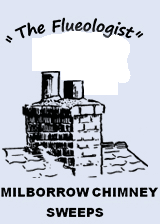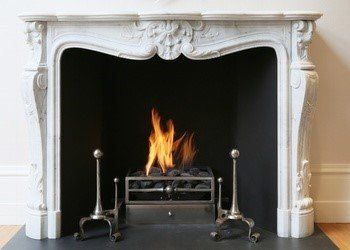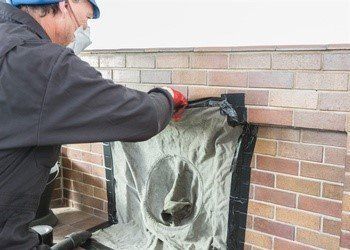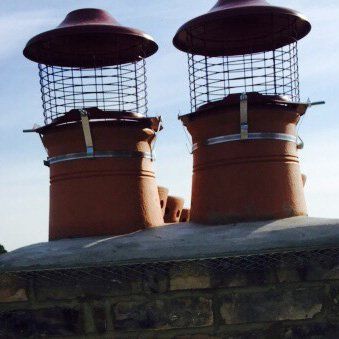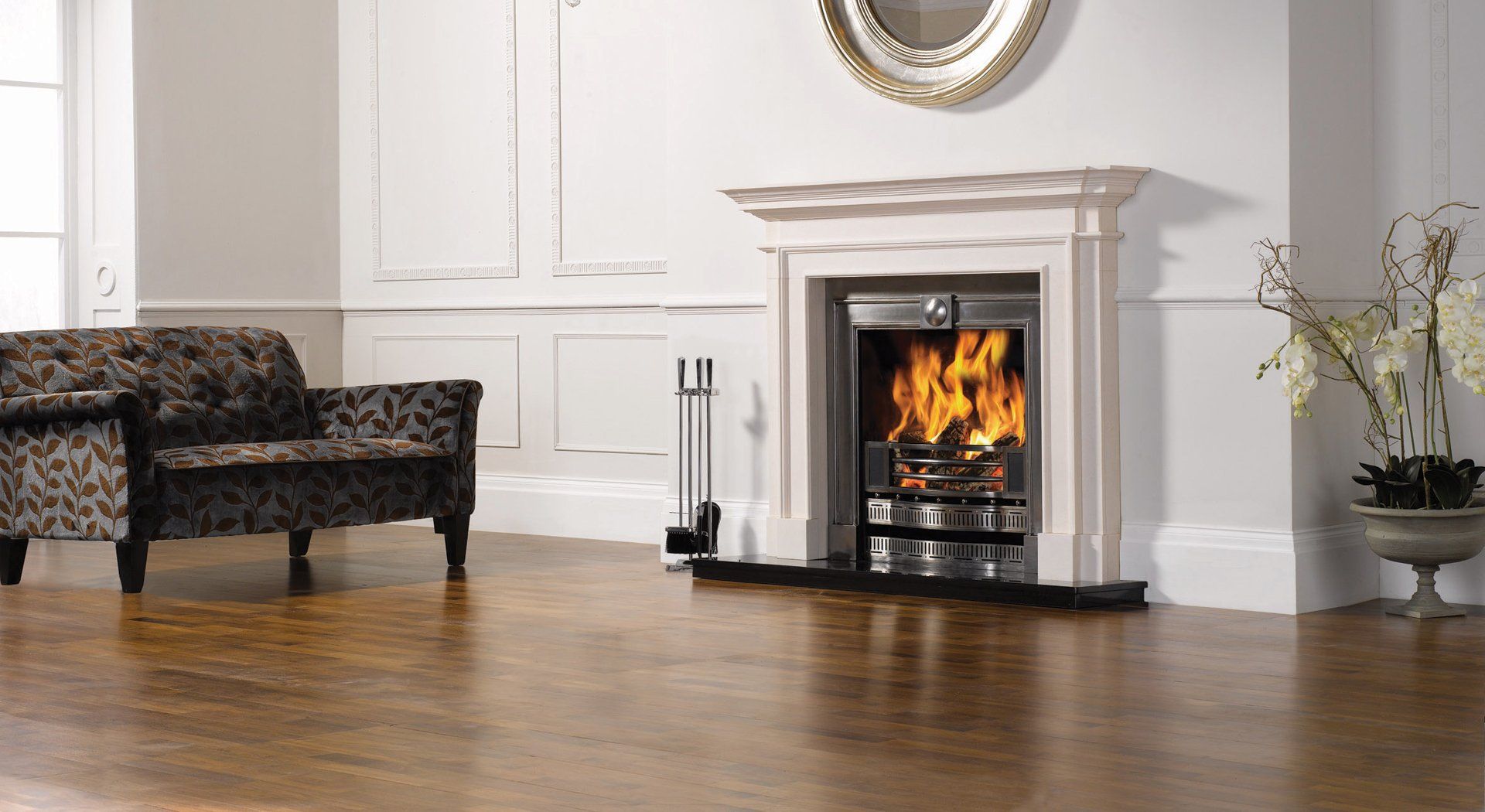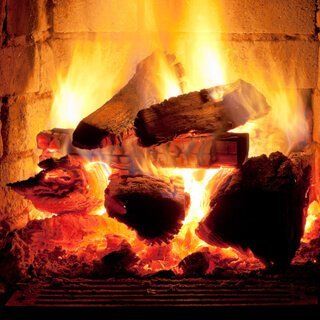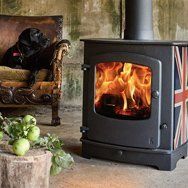Common Chimney Repair Problems That Are Easily Solved
- By Milborrow Chimney Sweeps
- •
- 12 Apr, 2019
- •
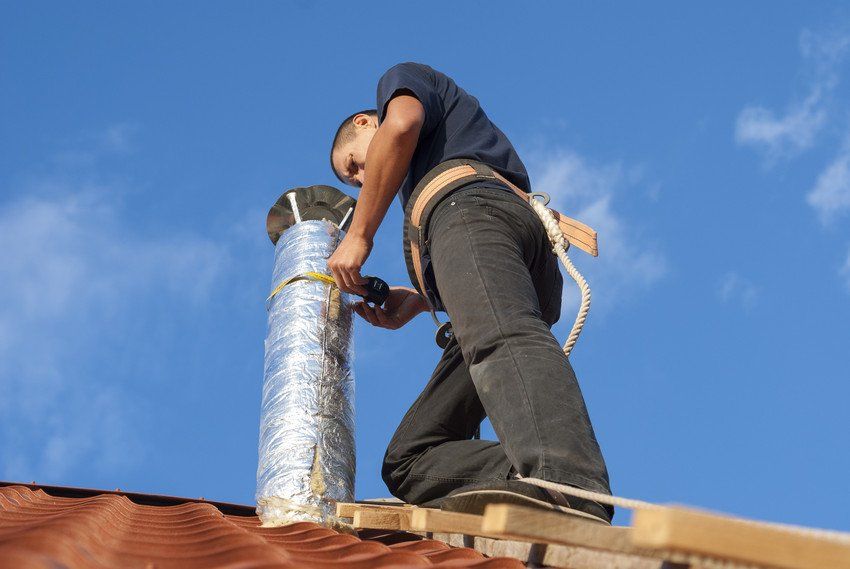
Domestic chimneys are synonymous with the traditional British skyline in our villages and towns. Chimneys were once exclusively a feature of castles, later on country piles, and then became a regular feature of ordinary homes. In the 17th and 18th centuries, particularly in urban areas, huge changes in architecture allowed for fireplaces to become smaller and to be installed in multiple rooms of a house. As fireplaces became more advanced, so did chimneys.
Period property enthusiasts refer to the Victorian age as the golden era for chimneys, with the classic 1906 Edith Nesbit novel The Railway Children, featuring a traditional family home named ‘three chimneys’. As the times have moved forward, chimneys aren't necessarily a staple for british homes, but the affinity for them hasn’t waned - they have become a must-have requirement for many homeowners and something of a status symbol. As attractive an addition a fireplace and chimney makes to any property, it also means taking on a whole new set of responsibilities to ensure your chimney is in best possible working order.
This comprehensive guide will talk you through the most common chimney repair problems that are encountered by homeowners and how to solve them. Many people don’t know where to begin in terms of chimney maintenance, but understanding a few of these common problems can help you prevent them from happening and have you relaxing by the fireside in no time!
Chances are, if you have a fireplace or not, chimney repair might not be at the top of your list of things to regularly keep tabs on. However, without adequate care, the chimney can actually become a hazard in the home. Without some level of basic cleaning and maintenance, it can cause significant water damage or even cause a fire. By taking some time to inspect your chimney and taking action when something doesn’t look quite right, you can continue safely enjoying your fireplace.
When you burn wood, it's more than just smoke that goes up the chimney. Something called creosote is deposited within the lining of it. Creosote is a kind of black, brownish tar-like substance which formulates itself as a fine carbon powder, making smoke. The combination of creosote and soot is was is commonly just referred to as soot in the chimney. Creosote comes in several forms and is highly dangerous because it’s flammable. Every year thousands of house fires happen and this is down to chimneys that haven’t been cleaned or maintained properly. This can also prevent proper ventilation of the chimney system, potentially causing dangerous fumes to enter the home. An obstructed chimney can be one of the reasons that carbon monoxide, known as the silent killer, can also enter the home. In large quantities carbon monoxide can be deadly, especially as its odourless, tasteless and invisible. During a professional chimney clean, a chimney sweep will use the appropriate tools to remove the flammable substances from the lining of the flue.
There are many forms of blockage that can happen to your chimney, other than creosote. Perhaps the most common build-up is due to a birds nest, general debris or leaves. Blockage can also be due to neglected masonry within the chimney. As a preventative measure for this happening, its recommended, in accordance with guidelines set out by The National Fire Protection Association (NFPA), that you have your chimney inspected annually. If you do happen to have any kind of blockage issue, it can easily be removed by a professional chimney technician. Chimney blockage can be highly dangerous, in a similar vein to creosote, it can cause toxic fumes such as deadly carbon monoxide to enter your home. If a chimney hasn't got a sufficient amount of height, an ambient updraft can stop smoke from existing the chimney the way it's meant to. This combined with a home that is too airtight can draw smoke into the home.
When a fireplace is built, a chimney lining is included. The most cost-effective type of lining is clay tile; this isn’t as durable as stainless steel (which generally never needs to be replaced). Many homeowners are no doubt aware of the amount of wear and tear chimneys are subjected to, so if they aren't made of constructed steel, there's a fair chance it'll get damaged over time. A damaged flue can be highly dangerous, and the fireplace itself should not be used until the lining is replaced. If there is cracking, the heat from the fire can reach combustible areas of the home and potentially trigger a fire. Similarly to the two previous points mentioned, this can potentially cause carbon monoxide to enter the home.
Your average chimney masonry can last about a century, depending on if the mortar is in good working order. The mortar is a thick paste used to bind the brickwork together, however, if this deteriorates, it can become exposed to moisture and can lead to internal brickwork problems. The best deterrent against this is to ensure your mortar is frequently checked along with the other sections of your chimney, as you may find that the mortar needs to be replaced.
Chimney crowns are often forgotten about; this is due in part to the fact that they are out of sight, based at the top of the chimney sealing the chimney from the outer edge at the rim of the flue liner. Moltar is frequently used to make the chimney crown and often subject to chipping again causing moisture to get through the cracks. If this is caught early, it's possible that you can repair the damage, however, in some cases a complete rebuild would be needed. Generally it's recommended that waterproofing the crown is a good deterrent against this happening.
How to know when it's time to hire a chimney sweep?
The National Fire Protection Association (NFPA) recommends that all chimneys are inspected once a year by a certified chimney professional. Some homeowners make the rookie error of missing an annual inspection because they haven't been using their chimney very often or do not detect any signs of problems. Nevertheless, in many cases it takes a professional pair of eyes to detect any kind of problems that could go otherwise undetected. A professional chimney sweep will also be able to inform you if there is anything wrong with the structure or the fireplace or the venting itself. The most common type of inspection consists of looking at all of the components of the fireplace without taking it apart.
This kind of inspection involves the chimney sweep looking for signs of combustible material such as creosote along with the presence of any other kind of debris. They will also look for other signs of damage due to a change of temperature or any other general age related concerns. If the inspector finds any problems, cleaning or repairs will be necessary. Another type of inspection requires the chimney sweep to inspect the inside of the chimney with various special tools, this process is minimally invasive. The most advanced type of inspection will involve the chimney sweep accessing the interior of the chimney wall, the chimney crown and other parts of the chimney that require specialised tools for access.
What does a fireplace restoration consist of?
This very much depends on what kind of fireplace you have. If you’ve moved into a new property and have inherited a fireplace, at the very least you’re going to need to have your chimney swept before you start using it. A chimney sweep can clean and inspect the flue and advise you on any necessary repairs. If an unused chimney has been sealed, it will need to be opened again. Victorian and Edwardian houses are fairly common in the UK and typically feature one piece cast iron fireplaces or cast-iron inserts. Typical issues with period fireplaces involve layers of overpainting, damaged tiles or harmed metal components.
If you are in need of a cosmetic spruce-up, again it's best to call on the help of a professional for this. You’ll also need to contact a professional if you have missing or damaged components. A trained restorer will be able to assist you in replacing hoods or grates. If your fireplace appears completely dilapidated, if might be best to start again with a high quality replica or reclaimed model. If you contact your local chimney sweeps, you’ll be able to enquire with them about chimney repair costs as well as other services such as chimney cleaning costs.
At Milborrow Chimney Sweeps, our trained and qualified chimney sweeps are able to quickly and efficiently identify a variety of chimney defects. Whether your chimney pot is broken or its a minor blockage, give us a call, and leave it to us. We also provide chimney inspection services for your chimney flue in Kent, Surrey and Sussex, offering plenty of knowledge and expertise on all things chimneys. Get in touch today to see how we can help.


